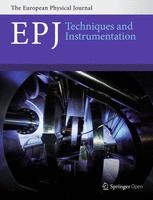QEMMS: Improving measurements of the kilogram
Currently in development by NIST, QEMMS will allow researchers to measure macroscopic masses, based on quantum principles. New analysis shows how an optimised design of this device could significantly reduce the errors associated with current approaches to mass measurement.
New York | Heidelberg, 29 July 2022
 Until 2018, the SI unit of mass, the kilogram, was defined as the mass of a real object: the International Prototype Kilogram, kept in a secure facility in the outskirts of Paris. On November 16, 2018, the kilogram was given a new, internationally-accepted definition, based on three defining constants: the speed of light, the Planck constant, and the hyperfine transition frequency of caesium. One of the methods to measure a mass based on the new definition is a device named the Kibble balance.
Until 2018, the SI unit of mass, the kilogram, was defined as the mass of a real object: the International Prototype Kilogram, kept in a secure facility in the outskirts of Paris. On November 16, 2018, the kilogram was given a new, internationally-accepted definition, based on three defining constants: the speed of light, the Planck constant, and the hyperfine transition frequency of caesium. One of the methods to measure a mass based on the new definition is a device named the Kibble balance.
Despite the current precision of this device’s measurements, its components can be improved to reduce sources of uncertainties. Through new research published in EPJ Techniques and Instrumentation, Darine Haddad and colleagues at the National Institute of Standards and Technology (NIST) show how a new, optimised approach to the Kibble balance’s design could further improve its accuracy.
Today, the Kibble balance allows researchers to measure macro-scale masses, based directly on fundamental quantum principles. To do this, two quantum effects are measured: named the Josephson effect, and quantum Hall resistance (QHR) – a quantised form of electrical resistance, which can be measured in 2D materials at low temperatures, when subjected to strong magnetic fields. Currently, QHR is realised in a separate experiment externally to the measurement system, introducing uncertainties to the Kibble balance’s overall measurement.
To overcome this problem, researchers at NIST are developing the Quantum Electro-Mechanical Metrology Suite (QEMMS). This device implements QHR directly into the electrical circuit for the Kibble balance, and the system for measuring the Josephson voltage – eliminating any calibration uncertainty.
In their study, Haddad’s team present an optimised design for QEMMS, targeting masses ranging from 10 to 200g. For masses of 100g, they showed that measurements could be made with a relative uncertainty of just 2x10-8 – offering considerable improvements on previous Kibble balance designs. As a result, QEMMS could soon allow researchers to make independent, ultra-precise measurements of macroscopic masses – significantly improving their experimental data.
Reference: L Keck, F Seifert, D Newell, S Schlamminger, R Thesk, D Haddad. Design of an enhanced mechanism for a new Kibble balance directly traceable to the quantum SI. EPJ Techn Instrum 9, 7 (2022). https://doi.org/10.1140/epjti/s40485-022-00080-3
Services for Journalists
The full article is available here.
Contact
Sabine Lehr | Springer | Physics Editorial Department
tel +4962214878336 | sabine.lehr@springer.com
